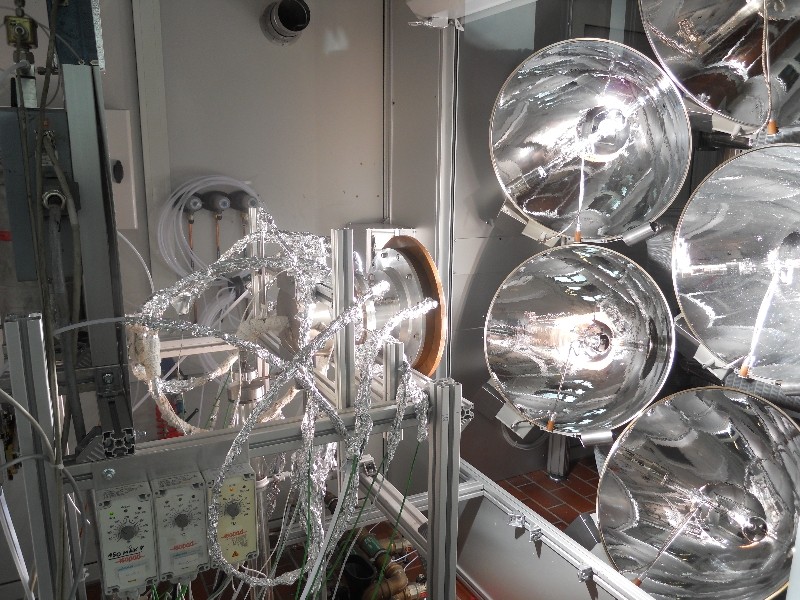From sunlight to jet fuel: EU project makes first "solar" kerosene

Researchers have for the first time successfully demonstrated the entire production chain for renewable kerosene, using concentrated light as a high-temperature energy source. The project is still at the experimental stage, with a glassful of jet fuel produced in laboratory conditions, using simulated sunlight. However, the results give hope that in future any liquid hydrocarbon fuels could be produced from sunlight, CO2 and water.
The process
In a first step concentrated light - simulating sunlight - was used to convert carbon dioxide and water to synthesis gas (syngas) in a high-temperature solar reactor containing metal-oxide based materials developed at ETH Zürich. The syngas (a mixture of hydrogen and carbon monoxide) was then converted into kerosene by Shell using the established "Fischer-Tropsch" process.
Although producing syngas through concentrated solar radiation is still at an early stage of development, the processing of syngas to kerosene is already being deployed by companies, including Shell, on a global scale. Combining the two approaches has the potential to provide secure, sustainable and scalable supplies of aviation fuel as well as diesel and gasoline, or even plastics. Fischer-Tropsch derived fuels are already certified and can be used by existing vehicles and aircraft without modifications of their engines or of fuel infrastructure.
Background
The four-year SOLAR-JET project was launched in June 2011 and is receiving €2.2 million of EU funding from the Seventh Framework Programme for Research and Technological Development (FP7). The SOLAR-JET project brings together research organisations from academia and industry (ETH Zürich, Bauhaus Luftfahrt, Deutsches Zentrum für Luft- und Raumfahrt (DLR), Shell Global Solutions and management partner ARTTIC).
In the next phase of the project, the partners plan to optimise the solar reactor and assess whether the technology will work on a larger scale and at competitive cost.
Finding new, sustainable sources of energy will remain a priority under Horizon 2020, the seven-year EU research and innovation programme launched on Jan. 1, 2014. In the call Competitive Low-Carbon Energy published on December 11 last year, the Commission proposed investing €732 million over two years in this area. The call includes a topic on the development of the next-generation technologies for biofuels and sustainable alternative fuels.
